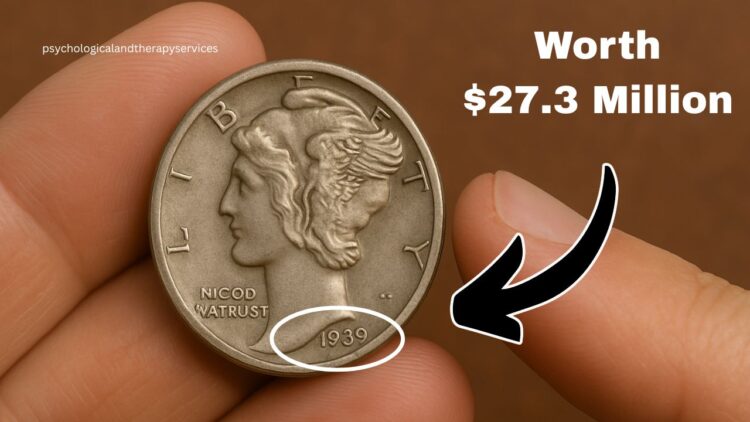Could a Mercury Dime ever fetch a staggering $27.3 million? This headline-grabbing figure has circulated recently, captivating collectors. But what’s real – fact or fantasy? Let’s dive deep into verified info, market records, and the reality behind Mercury Dime valuations.
The $27.3 Million Claim: Reality Check
Rumors about a Mercury Dime selling for $27.3 million surfaced in mid‑2025, generating buzz in collector forums. Yet no credible auction house or grading firm has documented such a sale. It appears to be unsubstantiated speculation, not a verified record.
Actual Auction Records & Top Sales
| Year / Type | Mint Mark / Details | Condition | Sale Price |
|---|---|---|---|
| 1916‑D Mercury Dime FB MS67 | Denver – Full Bands | Mint State 67 Full Bands (FB) | $207,000 |
| 1918‑D Mercury Dime FB MS67 | Denver – Full Bands | MS67 Full Bands | $182,125 |
| 1919‑D Mercury Dime FB MS66 | Denver – Full Bands | Near‑mint | $156,000 (2019) |
| 1916‑D Mercury Dime FB MS61 | Denver – Full Bands | MS61 | ~$20,400 |
What Determines Value: Key Factors
Rarity & Mint Mark
- Coins minted in Denver (D) in early years like 1916 or 1918 are especially rare. The 1916‑D had only ~264,000 minted due to mint priorities.
Full Bands (FB)
- This is a critical design detail on the reverse. Sharp, well‑separated horizontal bands of the fasces signal superior strike quality, commanding significantly higher prices.
Grading / Condition (MS Grades)
- Coins graded by PCGS or NGC on the Mint State scale (1–70). Only top‑grade examples (MS67 or MS66+) sell in high five to low six-figure ranges .
Price Ranges by Year and Condition
- Most circulated Mercury dimes (1916–1945): worth $2.40–$5, close to silver melt value (~0.0723 oz silver).
- Key dates with FB and high grade can reach $150,000–$200,000+, such as 1916‑D, 1919‑D, and 1918‑D in MS66+ condition.
- Even within rare subtypes, prices drop sharply with lower grade or lacking FB designation.
Fact or Fantasy?
While the $27.3 million claim remains unverified and highly unlikely, real Mercury Dimes have fetched six‑figure sums, some topping $200,000. But nothing remotely near multi‑million‑dollar territory has been documented.
Why the Myth Persists
- Misinformation on forums or social media plays up potential value.
- Wild speculation comparing with other ultra‑rare US coins (e.g., 1894‑S Barber dime sold for ~$2 million) fuels rumors.
- The romantic history of Mercury Dimes (stunning design, low mintages, historic era) adds to the mystique.
The sensational $27.3 million Mercury Dime story is almost certainly a myth, without any supporting evidence. But that doesn’t detract from the genuine fascination collectors have with Mercury Dimes — especially rare, high‑grade Denver mint examples with Full Bands, which have fetched real six‑figure sums.
If you ever come across one, it’s worth having it professionally graded — even if it’s far from the fantastical headline number
FAQs
Could any Mercury Dime realistically reach $27.3 million?
No. No authenticated sale or grading record supports that figure. Verified top prices are in the $150K–$200K range.
What’s the most valuable Mercury Dime recorded?
A 1916‑D, MS67 Full Bands sold for ~$207,000 — widely regarded as the auction record .
How can I tell if my Mercury Dime is valuable?
Look for key dates (especially 1916‑D, 1918‑D, 1919‑D), check for Full Bands, and consider having it certified by PCGS or NGC.

